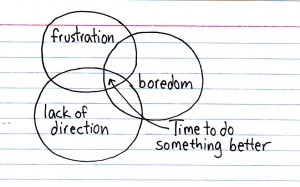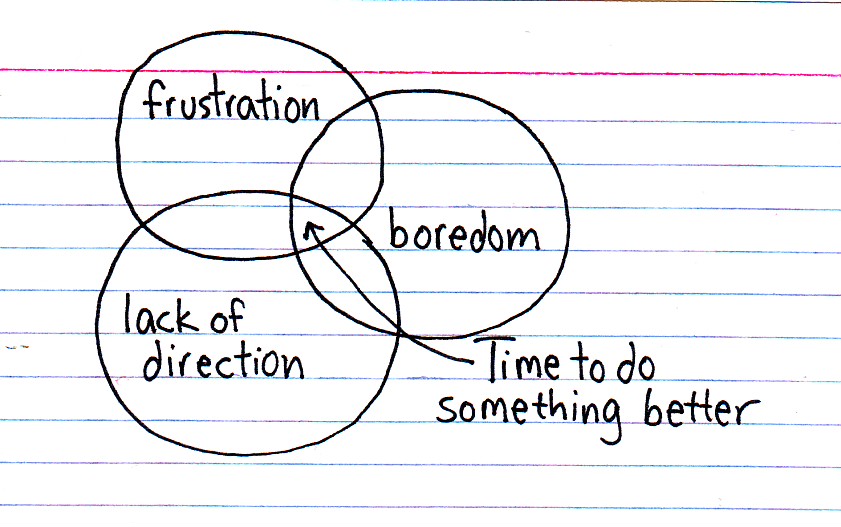
Every now and then, a student is sent to my office. I don’t encourage this practice, because I feel as though a classroom teacher with whom a student has developed a personal relationship is in the best position to help transform a so-called “discipline” situation into a learning opportunity. As I peruse through office referral records over the years, it never ceases to amaze me that the students in our most engaging classrooms never seem to find their way to my office door. (Unless it’s for a good reason, like to play ping-pong or deliver a birthday treat.)
So if our students are bored, or frustrated, or have no direction, what is left for them to do? Find something better, of course. To a child, something “better” may be trying to get a laugh out of classmates. Deciding to draw, read, stare out the window, not raise his hand, go for a bathroom break, take a pencil off of a neighbor’s desk. Throw it at someone.
The good news is, a teacher has all of the power to ensure that child is not bored by providing engagement through challenging, yet appropriate learning activities. A teacher can ensure a child who is feeling frustrated receives meaningful feedback, engages in dialogue about learning, and supports him every step of the way. (Insert smiles… a lot of smiles.) A teacher can provide direction to a student. This does not come in the form of, “Well, it’s March, so we always learn about ecosystems in the fourth grade in March,” but rather helping the child explore content in a way that’s personally relevant, while allowing him to take ownership of passion-driven, student-centered learning opportunities.
This premise isn’t limited to children. If I was bored, frustrated, and had no direction, I’d go off looking for something better to do, too. This is so important for educational leaders to understand. How are we making sure our teachers aren’t bored? Boredom can lead to a sense of complacency, where a teacher feels comfortable delivering the same lessons year in and year out, in the manner in which they’ve always done so. Are any of us okay with that? Simple acts like sitting down with teachers to discuss their future goals, finding out what they’re passionate about, and with which colleagues they would like to collaborate; allowing for Fed-Ex days of discovery and inviting them to explore alternative avenues of learning such as through Twitter and attending #edcamps (was so excited two of our teachers attended #edcampphilly last weekend, with more set to attend #ntcamp this July!); helping them see that the role of educator is far more complex than a person with a teacher’s manual stationed at the front of the room.
Frustration spawns negativity. No one wants to feel frustrated in their work, particularly educators. As principals, we can ensure we are not imposing directives without justification, resources, time, or supportive efforts. Have an open door and ask input from your teachers. Everything we do in our schools should relate back to organization’s shared vision and mission. It should be clearly defined and should drive all decisions.
This year I’ve seen tremendous growth in my teachers’ willingness to relinquish control of instruction and place learning in the hands of their students. I am particularly proud of my Powerful Learning Practice cohort. Their growth and enthusiasm for our action research project and the work they did with our students this year was evident at our culminating event a few weeks ago. It was so nice to see them beam with pride when describing their students’ engagement, connections made, and collaborative activities to the other PLP participants. They’re meeting with our entire faculty today to share their experiences, and I know they’ve been true leaders throughout the year for our staff. Our involvement in PLP asked us to consider the shifts in thinking about education and apply those shifts to our classrooms, and I know this was at times exhausting and overwhelming for our cohort, but we were never bored. The challenge to succeed for our kids kept us going…
Keep your parents and community engaged, as well. We have a very supportive group of parents who contribute daily to our learning. They volunteer in classrooms, help organize assemblies and events, comment on our students’ blogs, and provide much needed care and support to our entire school.
Educators everywhere are beginning to realize that if our public schools are places where students and parents experience boredom and frustration, and the organization lacks direction, people are going to go elsewhere to have their educational needs met. They have already begun doing so.
It’s time to re-engage: our students in their learning, our teachers in their work, our administrators with their visions, and our communities with our schools.


Amen to all that.
Discipline problems for students are usually tied to boredom. Poor morale among teachers is usually tied to a lack of trust, which results in a certain kind of entropy–which frequently leads back to that boredom for the students.
The beauty of our profession is that we can inspire each other, and this blog post did it for me today, right when I needed it. Thanks.